The best movies to watch now on Paramount+
From the recent addition You Hurt My Feelings to Top Gun: Maverick toThe Godfather trilogy, Paramount’s streaming platform has solid options for film fans
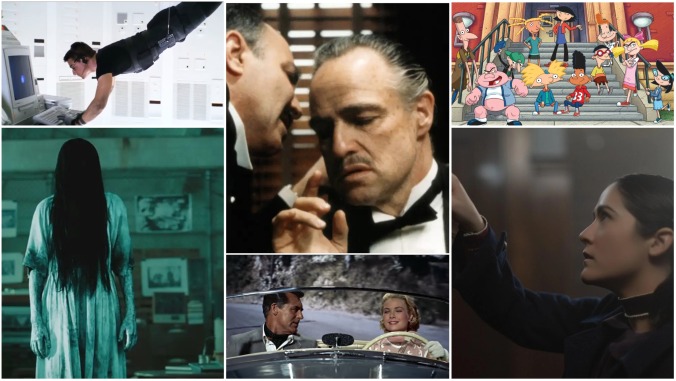
If Paramount+ isn’t your go-to choice yet when you’re in a movie-watching mood, you might want to reconsider. Backed by the impressive catalog of one of Hollywood’s oldest studios, the streaming service is loaded with some of Hollywood’s most revered classics, along with some more recent titles that are worth a look.
But how to wade through the overwhelming options and find the best of the best? That’s what The A.V. Club is here for—to point you in the right direction with our expert opinions on cinema old and new. In addition to acknowledged classics like To Catch A Thief and The Godfather trilogy, Paramount+ also features contemporary blockbusters like Top Gun: Maverick, the first six Mission: Impossible films (so you can prep yourself for next week’s arrival of Mission: Impossible: Dead Reckoning Part One), and smaller films like the recent A24 critical darling You Hurt My Feelings. So read on for our top recommendations.
This list was updated on January 27, 2024.
One of the three people who directed , a documentary portrait of the COVID-19 crisis in Wuhan, is credited only as Anonymous, perhaps due to some legally problematic association with the hospital where most of the film was shot. That seems apropos in another way, though: Virtually everyone who appears on screen is functionally anonymous. All of the doctors and nurses working tirelessly to save lives are decked out in protective equipment that’s just one notch down from a hazmat suit; the film occasionally names them via superimposed text, but it’s still nearly impossible to keep track of who’s who. The patients, similarly, have their faces largely obscured, either by standard face masks or (much too frequently) by oxygen masks and intubation tubes. The visual interchangeability serves as a reminder that this exact same nightmare has played out all over the globe this year. Wuhan just happened to go through the wringer first, totally locking down a city more populous (11 million) than any in America. []
One of the prime “rules” of screenwriting is that your main character has to change. Not just throughout the movie, but a little bit by the end of every scene, even. Yet part of the appeal of so many classic big-screen clowns is that they don’t change—or at least, if they do, they’re back to square one by the next movie. The Three Stooges will never resolve their differences peacefully. Hardy’s always going to blame Laurel. Costello cannot ever learn to be as brave as Abbott. And Beavis and Butt-Head, despite the occasional lifeline thrown to them by the misguided kindness of people like hippie teacher Mr. Van Driessen, will remain dumb, destructive, nacho-loving horndogs who seldom get closer to actual sexual intercourse than an accidental double entendre. All of which is to say that is pretty much what you expect—and it’s, uhhhhh, pretty cool. []
It’s amazing how the phrase “Once upon a time…” will let a ham-handed storyteller get away with just about anything. Under the auspices of a simple fable, Lasse Hallström’s sickly sweet is free to engage in a lopsided war of values between happy, exuberant, liberal-minded candy-lovers and the grim, dogmatic sourpusses determined to spoil their good time. Its storybook trappings also allow Hallström and his screenwriters to goose up the shameless “enchantment” until their heavy glaze of magic realism begins to seem more like a force-fed confection. “A sly wind from the North” blows Juliette Binoche and her daughter (Ponette’s wonderful Victoire Thivisol) into an idyllic late-’50s French village, where they open a chocolate shop that entices the citizenry but threatens to shake its moral foundation. []
In a performance every bit as magnetic and powerful as her career-making turn in Elizabeth, Cate Blanchett stars in as a semi-professional psychic and widowed mother of three who serves as a paragon of virtue and honesty in a Southern small town desperately in need of both. Although alternately blessed and cursed with legitimate psychic powers, Blanchett mostly provides support and counsel to her working-class clients, who include a terrified battered wife (Hilary Swank) whose husband (Keanu Reeves) doesn’t take kindly to the idea of her seeking supernatural advice. Although regarded with suspicion and contempt by much of the town, Blanchett is put to use by police after the promiscuous daughter (Katie Holmes) of a respected businessman disappears, and the process eventually leads to Reeves’ arrest after Holmes’ body is discovered. As in A Simple Plan, director Sam Raimi captures the desperation and sadness of life among the working poor through countless telling details—anachronistic hairstyles, Kmart ensembles, homes that barely qualify as functional—without resorting to the condescension and ridicule that typify most Hollywood depictions of working-class life. []
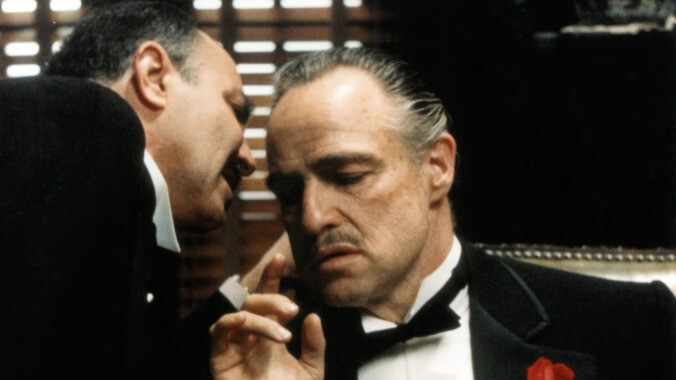
In films, family sustains until it starts to kill. The first film traces the decline of Don Vito Corleone and the ascent of his son Michael (Al Pacino), a war hero whose stated intention to stay out of the family business matches his father’s ambitions to keep him clean. But in the world the Don’s helped create, it’s a foolish wish. Coppola uses the peerless dark lens of cinematographer Gordon Willis to capture the eclipse of Pacino’s soul as he casts his commitment to a law-abiding life aside in order to protect his family. What starts as a familial obligation slowly turns Michael into a colder version of the father he set out to protect. His mounting sins give the famous christening finale the tone of a satanic rite. []Stream it now: ,
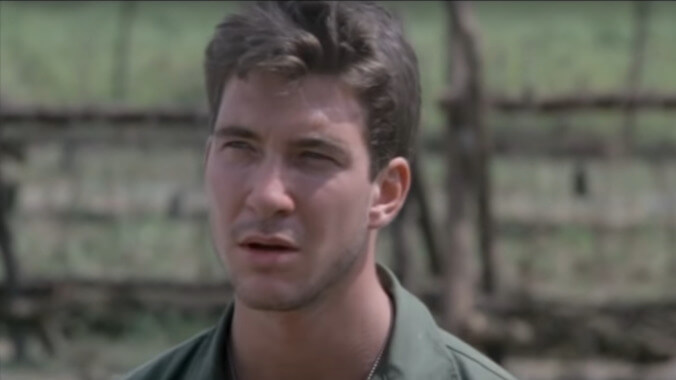
There was such a glut of Vietnam-set war films in the late ‘80s that “Vietnam movie” practically became its own genre, like slasher flicks and horny-teen romps. Somewhat lost in the shuffle was 1987's , an ideology-free two-fisted tale about one platoon’s attempt to seize a strategic position near the Laotian border. Screenwriter-producer James Carabatsos and director John Irvin do follow the Vietnam-movie blueprint, right down to scenes where the jaded short-timers freeze out the FNGs (“fuckin’ new guys”), but the bulk of Hamburger Hill is narrow in scope and pulpy in content—similar to a vintage Sam Fuller war story. Between its dreamy Philip Glass score, vivid location shooting, and strong early performances by future stars Dylan McDermott, Courtney Vance, Steven Weber, and Don Cheadle, Hamburger Hill stands out from the pack as one of the best of the Vietnam movies. []
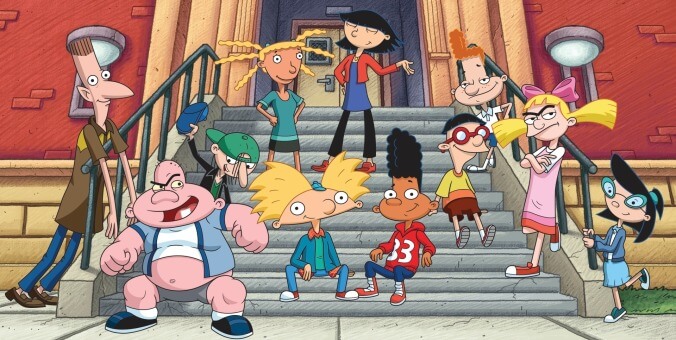
On a purely visual level, is an abomination: Arnold and his freakishly misshapen cohorts boast some of the creepiest character design this side of The Family Guy, while the limited animation recalls the hackwork of Hanna-Barbera. Thankfully, the film’s strengths rest elsewhere, most notably in its smart, funny, affectionate depiction of a close-knit, vibrant community filled with memorable characters. Arnold and his best friend are both a little bland, but the film wisely surrounds them with enough loopy scene-stealers for several movies, including an incorrigible, escape-prone grandmother and a monobrow-sporting oddball who professes to loathe Arnold while nursing a borderline-psychotic obsession with him. Surprisingly political for a kids’ film, not to mention a piece of cross-marketed product from a multinational corporation, Arnold’s subtext—including a subplot borrowed from Watergate—will probably go unnoticed by much of its audience, but that doesn’t make it any less refreshing or pointed. []

maintains Hey Arnold!’s warm tone and careful pacing, its willingness to let its young characters absorb dramatic moments and contemplate within silences. It’s not an aesthetic many kids may be accustomed to—today’s youth-oriented programming is geared more toward wackier, faster-paced TV animation—but newcomers familiar and comfortable with an energy that’s between Steven Universe and Gravity Falls will be satisfied. And the Hey Arnold! vets will feel right at home, noticing various deep-cut references to the show that rarely distract from the story being told. The Jungle Movie’s strengths are in the quiet moments, the ones in which the camera lingers on characters at their most emotionally honest and vulnerable, or when it tracks across city landscapes populated with people engaged in their own lives. The film utilizes montages for concentrated community work or emotional poignancy: Arnold’s grandparents (Dan Castellaneta and Tress MacNeille) confronting their grandson’s desire to ditch the class trip and search for his parents, or the testing of the complex, tenuous relationships between Arnold (Mason Vale Cotton), his best friend Gerald (Benjamin Flores Jr.), and his schoolyard bully/secret admirer Helga G. Pataki (Francesca Marie Smith). Letting characters and moments breathe was always Hey Arnold!’s hidden forte, and the same is true of The Jungle Movie. []
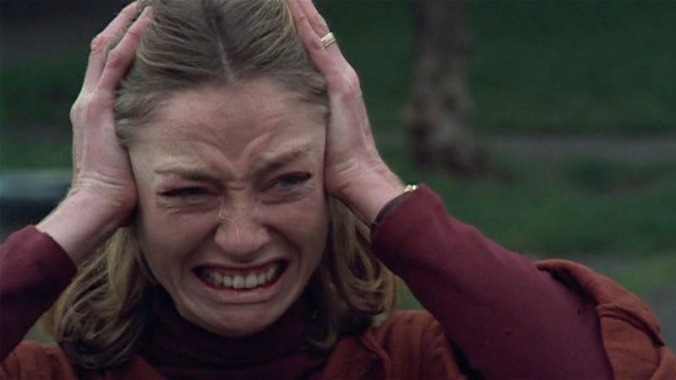
With apologies to Don Siegel and Abel Ferrara, the best adaptation of Jack Finney’s The Body Snatchers is still the 1978 version, which unleashes the allegorical bogeymen-from-above on an unsuspecting metropolis. Whereas the 1956 original is either anti-Communist or anti-anti-Communist, depending on whom you ask, Philip Kaufman’s Invasion takes on the Me Generation—the way hippies transformed into yuppies, basically overnight. Of course, to attribute just one agenda to the film is to deny the whole spectrum of anxieties it probes; Kaufman taps into fears of biological contamination, government surveillance, urban alienation, and waking up one day to discover that the people you know and love are not who you thought they were. More so than The Conversation or All The President’s Men or any of those Watergate-era milestones, this is the great paranoid thriller of the 1970s. []
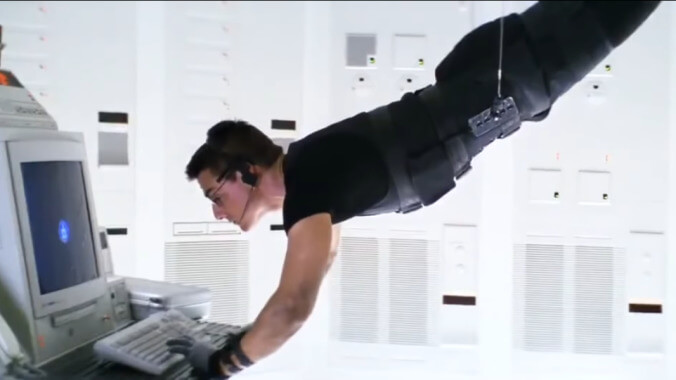
The biggest hit of his career, was the culmination of De Palma’s brief heyday as a Hollywood hit maker. (Just to try to imagine him getting a summer tentpole gig like this today.) But it’s no anonymous sell-out move: From its opening scene, which conflates government surveillance with the voyeurism of cinema, the film is unmistakably the work of the same director who made Blow Out or Dressed To Kill or any of those fabulously stylish, psychosexual ’80s thrillers. By asserting his authorial personality upfront, by conforming this franchise launcher to his own obsessions, De Palma set the precedent for the series. From here on out, the Mission: Impossible films would smuggle personal preoccupations into their crowd-pleasing packages. []
Why does it take 90 minutes before becomes recognizable as anything but a standard big-budget action movie? The story moves quickly, but it takes a long time to get anywhere interesting. Tom Cruise returns as an oft-smirking top international spy, this time charged with retrieving a deadly virus stolen by Australian turncoat agent Dougray Scott. Caught between them is Thandie Newton, an international thief once involved with Scott but now charmed by Cruise. A substantial letdown from its predecessor, M:I2's story (by Star Trek vets Brannon Braga and Ronald D. Moore) and script (by a slumming Robert Towne) seem determined to return Mission: Impossible to its roots as a James Bond rip-off. It’s also a disappointment coming from Woo, who used Broken Arrow and Face/Off to prove that his sensibility could be translated intact to American films. Only the action scenes bear his stamp—one even includes a conveniently placed throng of doves—but by the time they show up, context has robbed much of their impact. But not all: M:I2 at least ends well, with a final act that’s packed with an assortment of Woo’s signature action setpieces. Is it worth the price of admission? Probably not, but at least the film ends on a strong note. Still, a telling moment in the coda says everything about the blockbuster mentality, even in the post-Matrix era: When a character uses the word “expunge,” he immediately makes it clear that “expunge” is synonymous with “erase.” How helpful. []
is the big-screen directorial debut of Felicity and Lost co-creator J.J. Abrams, who instantly establishes it as an Abrams movie by opening not with a bang, but with the literal whimper of Tom Cruise, tied to a chair and watching arms dealer Philip Seymour Hoffman threaten the woman Cruise loves. He’s a likeable person placed in an impossible situation and forced to make hard choices. Viewers can be forgiven for flashing back to the first two seasons of Abrams’ Alias, a.k.a. “the good years.” The world is in danger, but the real drama comes from watching someone whose life is falling apart.Yes, it’s fundamentally business as usual, but it’s the best kind of business as usual, and it finds everyone working in top form. Abrams imports and enlarges Alias’ smooth, stylish, yet remarkably visceral approach to action, and the actors pack a satisfying amount of drama into the moments between action scenes, whether those moments involve Cruise’s romance with Kiss Kiss, Bang Bang’s Michelle Monaghan (always a welcome presence) or Philip Seymour Hoffman’s chillingly single-minded approach to international villainy. It’s all so well done that it’s easy to forget, or at least forgive, the fact that that the ultimate outcome of the whole formula-fulfilling exercise is never really in doubt. It must be summer at last. []
, the series’ fourth film, charges director Brad Bird with crafting an exciting action sequence around Tom Cruise, betting that the animator behind The Incredibles and Ratatouille would have similar luck with flesh and blood in his live-action debut. The bet pays off. And then some. As usual for the series, there’s little weight here. Has any franchise had a hero harder to care about, or less-defined, than Cruise’s Ethan Hunt? The character begins and ends with the star’s charisma. Thankfully, that remains considerable, and Cruise’s co-stars offer able support, from Paula Patton’s steely turn as a woman driven by revenge to Simon Pegg’s well-timed comic relief. But Bird’s direction—the work of someone with something to prove and the skills to prove it—puts the film over. From a prison break (timed to Dean Martin’s “Ain’t That A Kick In The Head”) to a finale that orchestrates many moving parts at once, Bird brings a scary amount of assurance to Ghost Protocol. His action scenes are clean, coherent, thrilling, and visceral, never more than in a mid-film sequence in Dubai that piles setpiece atop setpiece as the action moves in, around, up, and down the Burj Khalifa skyscraper—the tallest building in the world. As Cruise clings to the side of the building using malfunctioning equipment, and a sandstorm looms in the distance, the question shifts from whether Bird can direct an action film to whether there’s anyone out there who can top him. []
Ethan Hunt is a secret agent. He works with a team of high-tech specialists to save the world from terrorists. Often, their work involves dangerous physical feats performed under tight time constraints. That, folks, is about all the backstory you need to know to successfully enjoy —or for that matter, any of the four other entries in this blockbuster movie series that was once a blockbuster television series. As Hollywood continues to build franchises on top of franchises, turning the summer movie season into a massive crossover event, the remain blessedly, unfashionably self-contained: They’re stand-alone popcorn entertainments that can be watched in any order, with only the thinnest of connecting continuity between them. Who needs a post-credits tease for next summer’s sequel when you have the pre-credits spectacle of Tom Cruise really, truly, actually dangling from an airplane on its way to the sky? Rogue Nation, like the similarly propulsive Ghost Protocol, often feels like a pure instrument of fun, dragging Hunt through an ongoing series of precarious situations. There’s a crosscutting, Hitchcockian skirmish in the rafters of the Vienna Opera House, a tight motorcycle pursuit through heavy traffic, and a heist sequence—a series specialty—in which Hunt must filch some sensitive data from a circular underwater vault, dodging a rotating crane as his oxygen supply dwindles. McQuarrie mounts these sequences with playful booby-trap precision; in one particularly inspired moment, a car blows up in the background of the shot, seconds before Benji speeds a getaway vehicle into the foreground. Mostly, though, he just keeps the whole enterprise hurtling forward, from one hit of pleasure to the next. ]
In , Tom Cruise leaps headfirst out of an airplane, steers a motorcycle into the famously deadly oncoming traffic of the Arc De Triomphe roundabout, and eventually pilots an actual helicopter during the movie’s most elaborate high-altitude highlight. (The various are likely badges of honor for a showman so unconcerned with his own safety.) Converting all his vanity, mania, and pathological need to amaze into kinetic energy, Cruise makes Hunt not just a remarkable force of pure determination but also a kind of slapstick comic figure. What are sidekicks Benji (Simon Pegg) and Luther (Ving Rhames) really around for but to provide straight-man reactions to his willingness to leap through whatever flaming hoop the universe puts in front of him? Naturally, Fallout also plays to Cruise’s waning appeal as a romantic leading man, supplying him with no less than three potential love interests. It’s no accident that the biggest sparks fly with Ilsa (Rebecca Ferguson), the MI6 double agent enthrallingly introduced in Rogue Nation. Their attraction is basically an extension of their sensation-junkie workaholism: When mission objectives are at odds, even romance becomes a high-wire risk. But if Fallout has real dramatic stakes beyond minute-by-minute survival—its precarious balancing act on the edge of life and death—they come down to the looming threat of tough moral choices, the same kind of lives-trading compromises The Avengers couldn’t f. One might wish that director Chris McQuarrie pushed that predicament further, that he really forced Hunt—playing bad to ensnare the really bad—to inch up to the edges of his ethical limits for the sake of the greater good. But Fallout’s almost inexhaustible supply of sticky situations provides suspense aplenty: This may be the closest this peerless series has ever come to making us believe that the mission may actually be impossible. []
In director William Brent Bell’s , our favorite pint-sized, parent-less antagonist with a killer sensibility and the instinctual skill to slay all day is back and better than ever. While its title is a bit of a misnomer considering where this journey begins, it’s the rare prequel that surpasses the original. And similar to others in its genre, like Ouija: Origin Of Evil and Annabelle: Creation, it cleverly re-engineers those foundational building blocks to ingeniously complement its predecessor. []
In the ingenious suspense contraption , Earth has been overrun by blind beasties from above: a species of fast, spindly, vaguely reptilian monsters who can’t see their prey but can sure as hell hear it, pouncing with scary velocity at any sound louder than a handclap. That’s a drag for humanity, chatterboxes that we are. It’s also a great hook for a creature feature, and John Krasinski, star and director at the helm, milks it for all it’s worth. Horror movies often play with the contrast between deathly silence and deafening cacophony, one puncturing the other to shred nerves and send asses out of seats. A Quiet Place takes that strategy to a new extreme, engulfing characters and viewers alike in an eerie sustained hush, and then generating anxiety about how and when it will suddenly be shattered. It turns sound itself, cinema’s first invader, into a threat. []
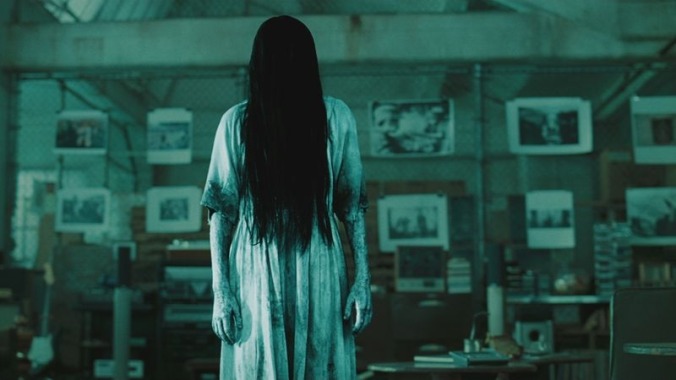
In spite of the technological twists, is at heart a classic ghost story, and it knows it. It allows the horror to unfold out of a campfire-ready opening scene, as two teenage girls exchange the story of the videotape while left alone in a seemingly peaceful house. The evening doesn’t go well, which prompts single mom and Seattle Post-Intelligencer reporter Naomi Watts to investigate. Her efforts lead her to a remote cabin and, inevitably, an unmarked videotape whose spooky contents could pass for unused dailies from Mulholland Dr. “Very film school,” says unimpressed former flame Martin Henderson. While he’s not far off the mark, the images have an unsettling quality that portends the troubles to come. Expanding on the strong visual sense evinced in the otherwise mediocre The Mexican, director Gore Verbinski creates an air of dread that begins with the first scene and never lets up, subtly incorporating elements from the current wave of Japanese horror films along the way. He succeeds mostly through sleight of hand. When the shocks come, they interrupt long stretches in which the camera lingers meaningfully as characters accumulate details that confirm what they already know: What they’ve seen will kill them, and soon. []
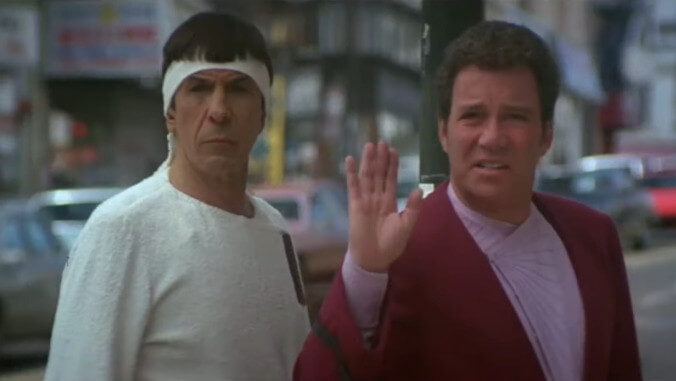
, Leonard Nimoy’s second time in the director’s chair, is a polished, well-balanced audience-pleaser. It’s a deeply ingratiating movie, the sort that comes out of the gate with a big goofy grin and a hand out-stretched, and keeps patting your back and offering you sodas for the entirety of its running time. It doesn’t have Khan’s edge, or any edge at all, really; despite the fact that Earth is threatened once again by a giant space probe that could destroy all life on the planet, the only truly serious moment in the film is the opening dedication to the crew of the Challenger. But it does have Kirk saving some whales, and who doesn’t like whales? If Search is for fans only, it’s no real stretch to say that Voyage Home is meant to be a kind of gateway drug. It’s nice to know the characters going in, but it’s not exactly necessary. [Zack Handlen]
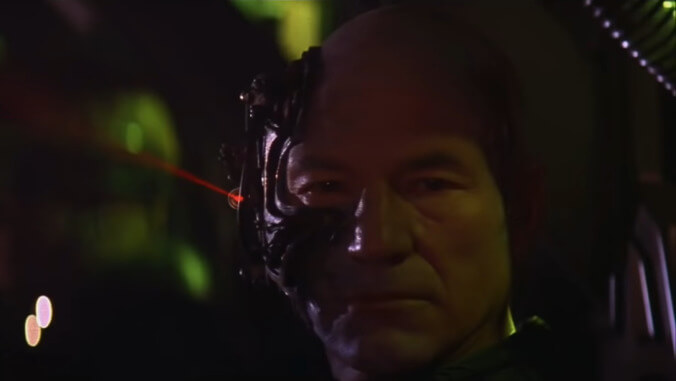
The second Trek movie starring the TNG crew, and their first feature without any hand-holding from original series vets, has quite a lot in common with the other second Trek movie, Wrath Of Khan. Both films are sequels to financially successful but critically lukewarm predecessor; both films use Moby Dick as a thematic touchstone; and both films feature villains that first appeared on the respective television shows of each crew. Khan debuted in the Borg in , the big difference (at least structurally) being that Khan was only featured once. By the time First Contact hit theaters, the Borg had become a seasonal regular on TNG, and where Wrath effectively cemented Khan’s place in Trek lore, First Contact merely delivered on the inevitable. The only other non-ensemble character who would be as likely to appear when TNG made its transition to the big screen is Q, and he already gets to do a fair bit in the series’ 90-minute-long finale. It’s not particularly surprising that the Borg would make the jump to cinema, but, despite a few episodes that watered down their initial impact, they aren’t unwelcome, either. Which is a good part of the reason behind the fourth connection between Wrath and Contact: Both movies are well-regarded, and considered by some as high-water marks for their respective series. []
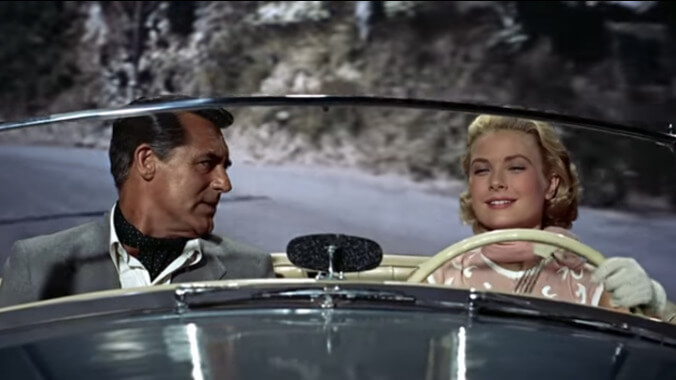
In Alfred Hitchcock’s , Cary Grant plays a former hero of the French resistance who can’t quite convince a skeptical world that he’s mended his ways and abandoned his glamorous old existence as a diamond thief for a life of simple, legal pleasures. Grant’s criminal history works against him in that respect, but it’s also quite possible that the film’s characters would rather inhabit a world in which Cary Grant is a debonair international jewel thief than one in which he’s a mere retiree content to while away lazy afternoons tending his garden. With the possible exception of “secret agent,” “continental master thief” seems like the only job worthy of Grant. As befits a movie with a protagonist nicknamed “The Cat,” Thief proceeds with feline grace, a blissful light-footedness that looks effortless enough, but could only have been accomplished by a master operating at peak form. If nothing else, Thief is a lesson in charisma courtesy of Grant and Grace Kelly, reluctant lovebirds who find love in larceny and larceny in love. []
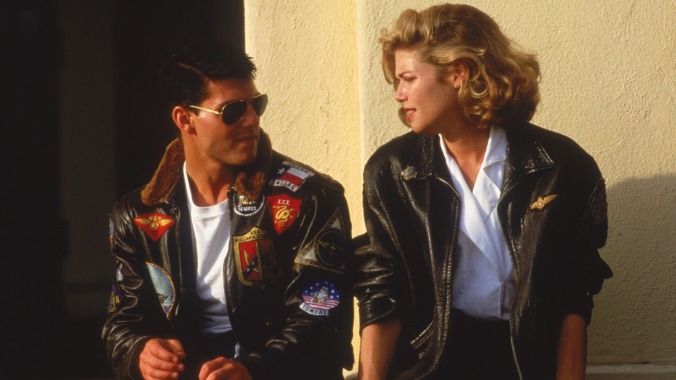
Midway through , the highest-grossing movie of 1986, there’s a scene where the film briefly abandons all sense of narrative and plummets into a sort of ecstatic erotic delirium. Tom Cruise’s Maverick and Anthony Edwards’ Goose, our two heroes, play a game of glistening beach volleyball against Val Kilmer’s Iceman and Rick Rossovich’s Slider, their blood rivals. Director Tony Scott cuts the scene to a Kenny Loggins song called “Playing With The Boys.” For three minutes, the film takes a pause and just admires these oiled-up bodies, letting them flex and slap and grunt and shine. If you saw Top Gun at any kind of formative age, this scene is seared into your memory…Top Gun is a beautiful movie. Scott shoots everything possible in golden-hour light—insane red-streaked sunsets, faces silhouetted against skylines, sweat glinting off of every face, steam billowing everywhere. The film has a pulse, thanks to Harold Faltermeyer’s mythic synth score and the percolating Kenny Loggins and Berlin songs that Giorgio Moroder produced. When planes are in the sky, twirling and spinning and nosediving, physics almost cease to exist. It’s the most aesthetically arresting propaganda film ever created. []
is a remarkable effort in an extraordinary film that evokes the iconography of its 1986 predecessor. But it exceeds the original technically, while circumventing naked jingoism in an era when depictions of the military can (or maybe should) no longer be unambiguously celebratory. Director Joe Kosinski () matches his well-established architectural precision with suitably nostalgic but never pandering emotionality, while Cruise commands the screen in a performance that leverages his multimillion-dollar star wattage to brighten the entire film. Glen Powell shines among the rest of the new recruits as Rooster’s nemesis, a next-generation version of Val Kilmer’s Iceman, even as Kilmer shows up for a brief and tender cameo highlighting both the wisdom that comes with getting older, and the heartbreaking vulnerability. But while Kosinski steadily builds to what feels like an hourlong, sustained climax that synthesizes expert piloting, virtuoso camerawork, and methodical storytelling, Cruise wields his singular Hollywood stature as effortlessly as his character does the joystick of an F/A-18 Super Hornet, reminding audiences why they’ve loved him for more than four decades. []
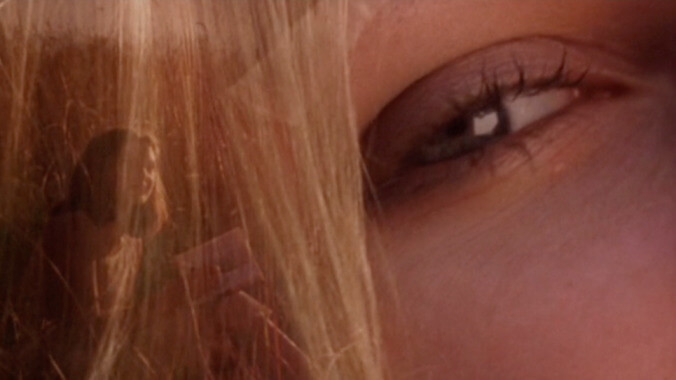
Before Lost In Translation established Sofia Coppola as one of the foremost authorities on boredom and ennui, her dreamy debut—an adaptation of the celebrated novel by Jeffrey Eugenides—offered a radical, haunting portrait of girlhood and thwarted puberty draped in floral print and soft pink. Who were the Lisbon girls, and why did they decide to take their own lives? These questions linger in the minds of a group of neighborhood boys, whose perspective we adopt as they struggle to understand these mythical young women and their fiery ringleader, Lux (a luminous Kirsten Dunst). Countering the inadequate words of her male narrator, Coppola steeps the film in intoxicating, impressionistic imagery—white dresses with grass stains, a sweater clinging to a bare shoulder, glossy magazines and sluggish bodies spread out on a carpet. is that rare coming-of-age film in which the mystery of the teenage girl coexists with a palpable understanding of what it feels like to be one, stifled and yearning for more. []
GET A.V.CLUB RIGHT IN YOUR INBOX
Pop culture obsessives writing for the pop culture obsessed.